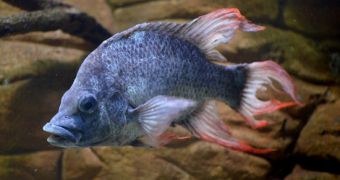A critically endangered species by the name Mangarahara cichlid (or Ptychochromis Insolitus, for those who feel like giving their tongue an intense workout) might yet have a chance at escaping extinction.
Thus, word has it that conservationists have finally managed to find a sweetheart for two male such fish living in captivity at the ZSL London Zoo’s Aquarium, and that they are now dreaming about the day when the wedding bells will ring and the fish will start a family.
The quest for a mate for the two male fish living at said aquarium began earlier this year, in May.
At that time, keepers at the ZSL London Zoo launched a global appeal and asked that anybody who had knowledge about the whereabouts of a female Mangarahara cichlid contact them immediately.
According to Mongabay, they eventually got in touch with a businessman in Madagascar, who told them that he had seen such fish somewhere in the country's northern regions.
Conservationists traveled to Madagascar as soon as possible and, after spending several days in a row exploring local water sources, eventually found several Mangarahara cichlid fish that had somehow managed to survive in the wild.
“After days of searching empty streams, and rapidly losing hope of finding the cichlid, the team visited a tiny village built on the edge of a now-disconnected tributary from the Mangarahara River,” the ZSL London Zoo explains.
“With help from local villagers, areas of water were cordoned off using nets to mark the search areas. Initially finding only other native species, the team were ecstatic when they finally found the first one of the last remaining Mangarahara cichlids in existence,” it adds.
Greenheads now have 18 fish belonging to this species to look after. They plan to breed them in captivity and hope that, thanks to their efforts, the Mangarahara cichlid will one day cease being a critically endangered species.
“These cichlids have shown remarkable survival skills, and managed to find one of the very last remaining water sources to live in, but their numbers are tiny and the non-flowing water is not an ideal habitat for them. We’re now doing all we can to protect these remaining fish,” says the Zoo's Aquarium curator.

 14 DAY TRIAL //
14 DAY TRIAL //